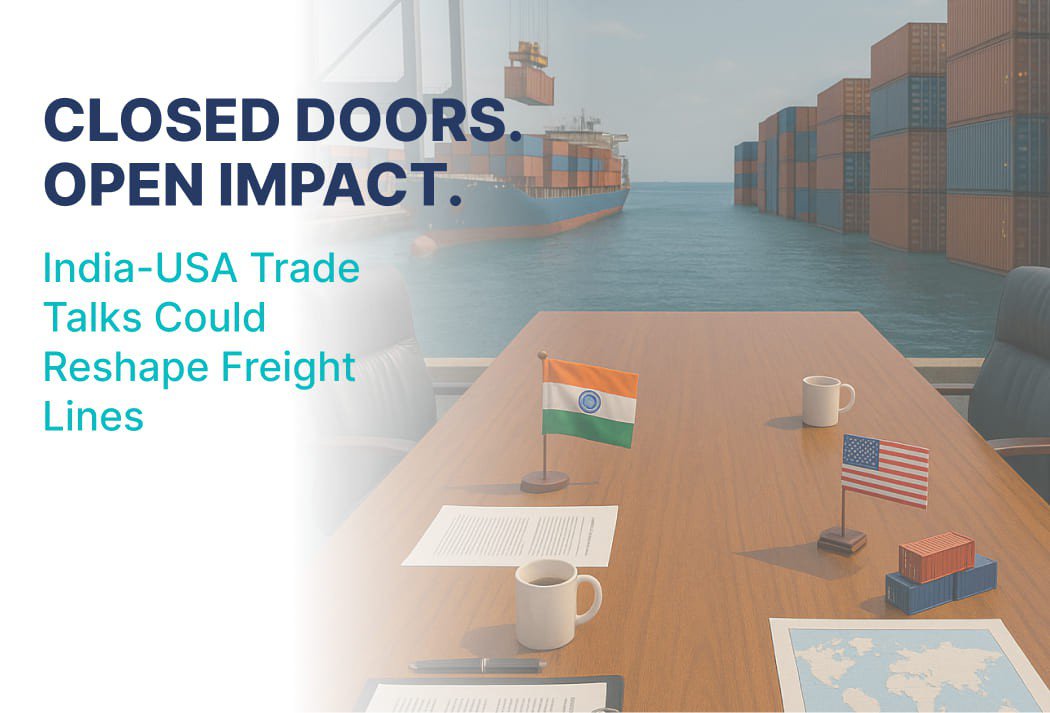
New Delhi, June 10, 2025 – A high‑stakes, four‑day round of closed‑door trade negotiations between India and the United States ended on June 10. Led by USTR officials and India's chief negotiator Rajesh Agrawal, these discussions aim at achieving an interim bilateral trade pact by month‑end—a strategic play ahead of a looming U.S. tariff deadline.
What Was on the Table?
|
Sector |
Highlights |
Impacts |
|
Industrial & Agri Goods |
Broader access to each other’s markets, tariff reduction proposals, easing non‑tariff barriers |
Could streamline supply chains and reduce freight costs |
|
Digital Trade |
Talks on improving customs facilitation, addressing data‑flow regulations |
Relevant for logistics tech, cross‑border e‑commerce |
|
Agriculture |
India cautiously rejected wheat, dairy, corn; offered lower tariffs on U.S. nuts |
A balanced exchange that still protects domestic interests |
|
Steel & Baseline Tariffs |
India pushing for exemption from 50% U.S. steel tariffs, rollback of 10% baseline tariffs |
Could greatly benefit India’s steel export logistics |
|
Energy & Defense |
Proposal to increase imports of U.S. LNG, crude, coal, and defense equipment |
Will influence freight lanes and integrated logistic networks |
Why the June Deadline?
- The U.S. will resume 26% retaliatory tariffs on Indian exports after July 9, unless an interim deal is struck
- India’s exports to the U.S. have surged—28% in early 2025, totaling $37.7 bn—underscoring the pressing need for tariff certainty
- A deal by month-end also aligns with G7 Summit meetings, creating an opportune venue for final signatures
Logistics & Freight Sector Impacts
- Freight volume stability: Reduced tariff unpredictability enhances forward planning for shipments like textiles, electronics, and seafood.
- Lean supply chains: Customs simplification could shorten port dwell times, cut demurrage costs, and smooth international rail/road transit.
- New corridors: Energy imports (LNG, coal, crude) from the U.S. may open fresh freight routes, including in multimodal transport.
- Tech-enabled gains: Streamlined digital trade supports e‑commerce logistics, CDN shipments, and integrated border‑crossing solutions.
What's Next?
- India and the U.S. are finalizing text for the initial tranche, targeting simpler skillsets first—tougher questions like subsidies and auto may come later
- A full-fledged BTA is expected by autumn 2025, with both leaders aiming to double bilateral trade to $500 bn by 2030
- Meanwhile, India is also engaging in trade engagements with the EU, signaling a broader strategic trade push .
FreightMango’s Take
- Short‑term wins: The interim pact could prevent freight disruptions and ensure stable export/import volumes.
- Customs reform: Protocol streamlining will benefit operators with less compliance overhead, easing movement across the border.
- New voyage options: If energy trade scales up, we may soon chart dedicated shipping routes and port logistics plans.
- Future proofing: As talks progress to autos, subsidies, and complex non‑tariff barriers, freight operators should watch these evolving domains.
Final Word
These Delhi negotiations mark a pivotal moment—balancing urgency (tariff clock ticking) and complexity (agri, steel, digital). For freight and logistics, the interim deal isn’t just a policy victory. It’s a promise of smoother, faster, and more predictable global flows. Stay tuned to FreightMango for real-time analysis once the deal is inked.





 Get instant quote
and compare offers in real time
Get instant quote
and compare offers in real time